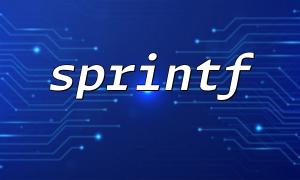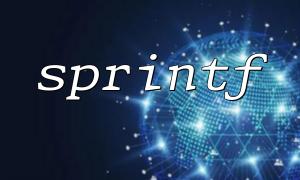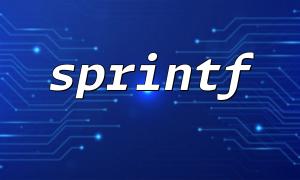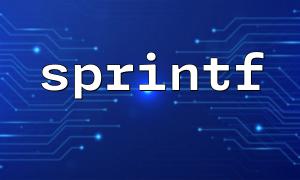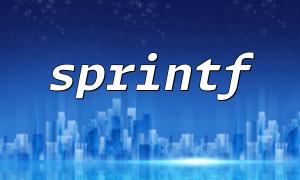In PHP, the sprintf function is often used to format strings, which allows us to insert one or more values into a predefined string template. This formatting is very useful, especially in scenarios where JSON strings are generated dynamically. When building JSON strings, we need to ensure the correctness of the format and avoid errors when manually splicing strings, and sprintf is a very suitable tool.
The sprintf function in PHP is used to generate a formatted string. Its basic syntax is as follows:
sprintf(string $format, mixed ...$values): string
$format : This is a string template containing one or more placeholders. sprintf will replace the value in $values to the corresponding placeholder position.
...$values : This is one or more values that will be inserted into the template.
When building JSON strings, various dynamic data are often involved, such as the URLs, user information, or other variables requested by the API. At this time, sprintf can help us generate structured and correctly formatted JSON strings.
Suppose we need to build a JSON string in the following format:
{
"url": "https://example.com/api",
"user": "john_doe",
"age": 30,
"active": true
}
The "url" part may change dynamically, and other fields (such as user , age , active ) are also provided dynamically through the program. In PHP, we can use sprintf to build a JSON string like this:
<?php
$url = "https://gitbox.net/api";
$user = "john_doe";
$age = 30;
$active = true;
// use sprintf Build JSON String
$json = sprintf('{
"url": "%s",
"user": "%s",
"age": %d,
"active": %s
}', $url, $user, $age, $active ? 'true' : 'false');
echo $json;
?>
URL : We replace https://gitbox.net/api with the actual URL and will be adjusted elsewhere as needed.
User Information : The $user variable stores the user's name (for example "john_doe").
Age : The $age variable stores the user's age (for example, 30).
Active state : The $active variable is a boolean value that we use conditional expressions to convert to a "true" or "false" string in sprintf .
Through sprintf , we can clearly see the formatted template, avoiding errors when manually splicing strings, and also more conveniently handling dynamic data.
Manually splicing strings can often make the code verbose and error-prone. Consider the following manual splicing example:
$json = '{"url": "' . $url . '", "user": "' . $user . '", "age": ' . $age . ', "active": ' . ($active ? 'true' : 'false') . '}';
While this code is feasible, it is harder to maintain and understand than sprintf . Especially when we have multiple placeholders, the readability and maintainability of the code will be greatly reduced.
The advantages of printf and sprintf are:
Strong readability: the clear placeholders and templates in the code make the overall structure clear at a glance.
Easy to maintain: If you need to modify some parts of the template (such as changing the order of JSON fields), you only need to adjust the template string.
High security: sprintf can avoid potential string splicing errors, especially when dealing with dynamic data.
By using sprintf , we can not only elegantly build dynamic JSON strings, but also improve the readability and maintainability of our code. In actual development, sprintf is a very powerful tool for handling similar tasks, which helps us reduce errors and make the code clearer.

